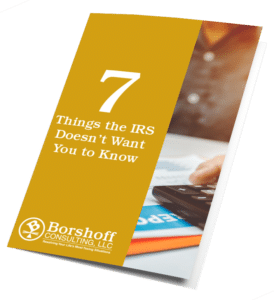The Earned Income Tax Credit (EITC) was created for low to moderate-income families. The more children you have, the greater the amount of the EITC is for you. You can claim this tax credit if you are childless, but you will not receive the same tax breaks, and the requirements for eligibility are stricter.
You must file a tax return to claim this credit, even if you do not need to. For the tax year 2020, the EITC is worth up to $6,660, but the amount you are eligible for is directly affected by your income level and the number of children you have.
In this article, we will look at who is qualified to take this tax credit, how to take the EITC on your tax return, the documentation required to claim the EITC, and other important information about the EITC.
What is the Earned Income Tax Credit?
The Earned Income Tax Credit (EITC) is a refundable tax credit for taxpayers with a low to moderate-income. The EITC was created to help low-income, working families by offering them a reduced tax liability or even a tax refund, depending on the circumstances.
In other words, if you qualify, the EITC will reduce the amount of tax you owe the IRS and may even give you a tax refund. This could be a huge tax break, so if you qualify, it’s a smart idea to take advantage of this tax credit.
Who is allowed to claim the tax credit?
To qualify for the Earned Income Tax Credit (EITC), you must meet certain requirements, and you are required to file an annual tax return, even if you are not required to do so. This credit is only available for someone who is a U.S. citizen or resident alien.
You also must have some earned income from working either for someone else or from running and/or owning a business or farm. Further rules specify these requirements.
Keep in mind that you do not have to have a child to claim this tax credit. However, the EITC typically only benefits working families – those who have a child or children. Parents who have qualifying children as dependents receive a much larger credit than taxpayers who do not have any qualifying children.
This doesn’t mean that you have to have children, but it’s certainly made for families, not those who have no children (also known as childless taxpayers). There are very specific requirements for those taxpayers who are childless.
For workers without qualifying children (those who are childless), the required age to qualify for the EITC is 25, and the taxpayer is not allowed to be above the age of 64 if he or she has no qualifying children and wants to take the EITC. These requirements do not apply to taxpayers who have qualifying children.
Check out IRS Publication 5334: Do I Qualify for the EITC? It gives you plenty of YES or NO questions that you can answer to determine if you are eligible to claim this tax credit or not. Before you get started looking into taking this tax credit, you should visit IRS Publication 5334. It won’t take long to fill out and can help ensure that you are truly eligible to take the EITC.
How much is this tax credit worth?
The tax credit amount depends on the amount of taxable income you have and how many children you have. For the 2020 tax year, the Earned Income Tax Credit is worth up to $6,660 per tax year. If you claim the credit and are qualified to do so, the least amount that you may receive for the credit is $538 per tax return per tax year.
If you only have one qualifying child, the maximum credit you may receive is $3,584. If you have two qualifying children, the maximum credit you may be eligible for is $5,920. Typically, families with three or more children may receive the maximum amount of the credit, which is the $6,660.
For workers who do not have any qualifying children, the maximum amount they may receive for the EITC is $538. Also, for these taxpayers, the phaseout amount occurs at much lower income amounts.
For the tax year 2020, the income requirement for taxpayers with no children is $15,820 ($21,710 if married filing jointly). If you have only one child, the income requirements jump to $41,756 ($47,646 if married filing jointly), and for three children, it goes to $47,440 ($53,330 for married filers using a joint tax return). Finally, those who have three or more children have an income requirement of $50,954 ($56,844 for married filing jointly).
As you can tell, your filing status (married couples filing jointly versus single filers) and adjusted gross income directly affect the amount of the Earned Income Credit that you are qualified for.
For the tax year 2019 and any other relevant previous tax years, please check out the IRS’s Earned Income Tax Credit Income Limits and Maximum Credit page. It will give you tables with the above information and all income limits and what the credit will be for the last few years.
Qualified working taxpayers are able to receive a credit equal to a percentage of their earnings up to a maximum credit, as mentioned above. As you can see, the tax credit rate and the maximum available credit amount depend on the number of children.
Once the credit reaches its maximum amount, it remains steady until your earnings reach the phaseout point. Then, it declines with each additional dollar of income until the credit amount is exhausted.
How does the tax credit work when filing your taxes?
The Earned Income Tax Credit (EITC) gives you a fixed percentage of your earnings from the first dollar of your earnings until the tax credit reaches its maximum. After that, the maximum tax credit is paid until your earnings reach a specified level. Further information on the income requirements and tax credit you need is explained in the last section.
Once your income level is met, the credit declines with each additional dollar of income until no tax credit is available.
To receive the Earned Income Tax Credit, follow these basic steps, or meet with a qualified tax professional who can help you file your return correctly the first time around.
- You must file a federal tax return and claim the Earned Income Tax Credit on it. If you think you would have been able to claim the EITC in previous tax years, it’s quite possibly not too late! To find out if you were eligible to claim the tax credit in previous years (2019, 2018, and 2017), use the EITC Assistant, created by the IRS.
- You must file IRS Schedule EIC: Earned Income Tax Credit listing your children if you do have a qualifying child or children. Attach this schedule to your IRS Form 1040 or 1040 SR.
- Make sure you have the correct documentation to back up your claim for the EITC and keep copies of your annual tax return and all supporting documentation in case you are audited and must prove your claim.
- You may find it easier to hire someone to do your taxes, which is always a good idea when claiming tax credits. There are special rules about claiming more than one tax credit, and a tax professional generally knows all about them. You will still need the correct backup material to give to a tax specialist, though.
What documentation do I need in order to claim this tax credit?
According to the Internal Revenue Service, you need to have the following documentation as back-up material when claiming the Earned Income Tax Credit (EITC) so that it is done correctly:
- Social Security cards or other United States government documents that verify all individuals listed on your tax return
- The correct birth dates for all individuals (taxpayers and dependents) listed on your tax return
- All income statements, including documents such as W-2 forms, 1099 forms, documents showing you had investment income, and any other documents that show the amount of tax that was withheld
- All expenses records, such as tuition statements, mortgage interest statements, or real estate tax documents
- All forms that report specific information like 1095 forms
- Bank routing numbers or account numbers where you want your tax refund sent to
- All information concerning dependent childcare, such as the name and address of paid caretakers. (You will also need their Social Security number or tax identification number).
What else should I know about this tax credit?
This is a tax credit that you will want to be sure to take if you qualify for it. The IRS may notify you if it believes you qualify for this tax credit but did not take it. However, the IRS isn’t like a calendar notification; you shouldn’t plan on hearing from you if you miss a credit on your tax return.
If you didn’t claim the EITC when you filed your previous tax returns from the past 3 years, you need to let the IRS know so that you can get any money that was due to you back. Likewise, if you were due this tax credit but were denied, you should get in touch with the IRS or a qualified tax specialist to claim the credit.
To refute a denial of this tax credit, you will need to complete IRS Form 8862: Information to Claim Certain Refundable Credits After Disallowance.
Although the Earned Income Tax Credit (EITC) provides substantial support for low to moderate-income workers, whether they have children or not, there is actually very little support to workers who do not have qualifying children. Usually, this means the worker does not have children or is not the custodial parent for said children.
Since this is a refundable tax credit, you may be able to get a tax refund if you are able to claim more than your tax liability. This could be a huge benefit for you, depending on how much you are qualified to take!
Conclusion
Are you going to try to take the EITC on your next tax return or think you may have missed claiming this tax credit on previous tax returns? You should remedy this right away so that you can receive any amounts due to you from the IRS.
If you need assistance in claiming tax credits or filing your annual tax return, don’t hesitate to reach out to Borshoff Consulting for a free tax consultation. It’s wise to have a tax accountant help you file your tax return each year so that there are no major mistakes on your tax return. The last thing you want is to have unexpected tax debt because you filed your taxes incorrectly.
Many people make mistakes when claiming the EITC, which is just one reason a tax professional is a good idea. Check out the IRS’s page called, Watch Out for These Common EITC Errors to see some of the most common filing errors people do when trying to claim the EITC.
Do you need assistance with an audit or business decision? We can represent you in the event of an audit; we also do business consultations, so contact us today to find out how we can best help you! You can trust Indiana’s tax expert!





